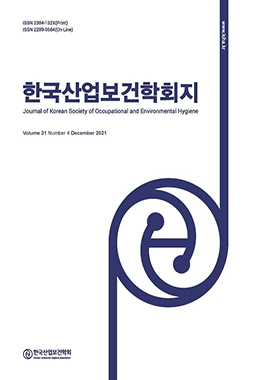Objectives: By law, companies in Korea must periodically measure workers’ exposure to harmful chemicals (the system is called the Work Environment Monitoring Program (WMP)[a]) and report the results to the government. The government also measures exposure to monitor the WMP’s reliability (called Reliability Assessment (RA) for WMP[b]). The issue is that measured data from these two sources are so different that the objectivity of WMP needs to be confirmed by comparing the results using the European Centre for Ecotoxicology and Toxicology of Chemicals’ Targeted Risk Assessment (ECETOC TRA).
Methods: Step 1: Data collection from WMP reports submitted by companies (n=586) and RA for WMP written by the government (n=33). Step 2: Data Standardization by key information included. Step 3: Data conversion to input-variables required to run the ECETOC TRA model, and run the model with specific data (n=514) which meet the predetermined exposure scenario. Step 4: Statistical data analysis by process category (PROC) and ventilation type from each source ([A] and [B]). Step 5: Additional analysis of any unexpected results.
Results: The process categories of the production and handling of Dichloromethane were classified into 12 PROCs, and ten of them were selected to run ECETOC TRA. Modeled values tended to be higher than measured values from both sources. For the measured values from WMP, RCR distribution by PROC was narrow (0.197-0.267, 95% CI) and did not have a relationship with ventilation type, which differs from the tendency of the modeling result. Meanwhile, the measured values from RA for WMP were relatively widely distributed (0.301-1.177, 95% CI) by PROC. In particular PROCs (13,19) were high enough to exceed 1. Also, they become low with better ventilation types and appear differently depending on the ventilation type, similar to the model result.
Conclusions: This study revealed that ECETOC TRA might have the potential to serve as a screening tool for exposure assessment and to be used as assistive method for WMP to estimate exposure. Further empirical study is required to confirm its availability as a screening tool.




